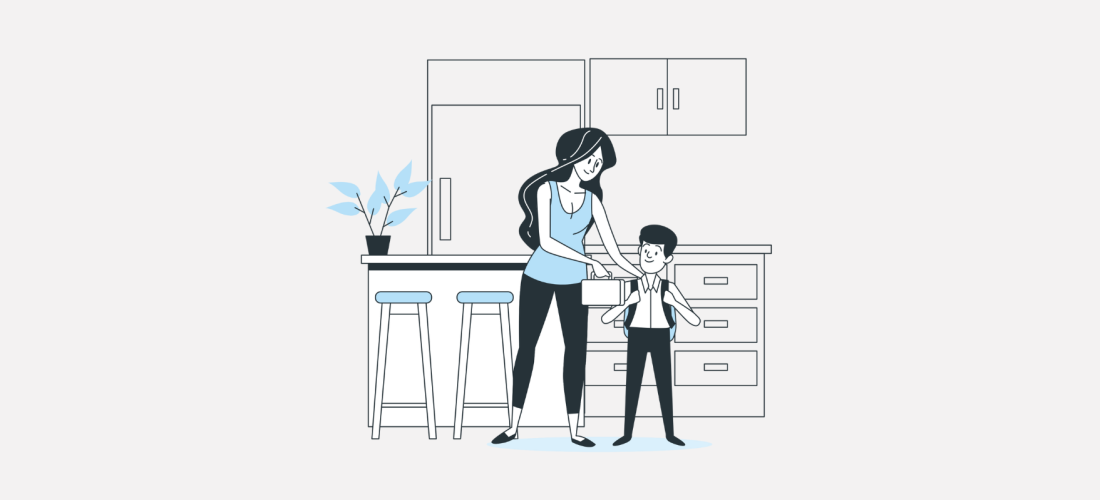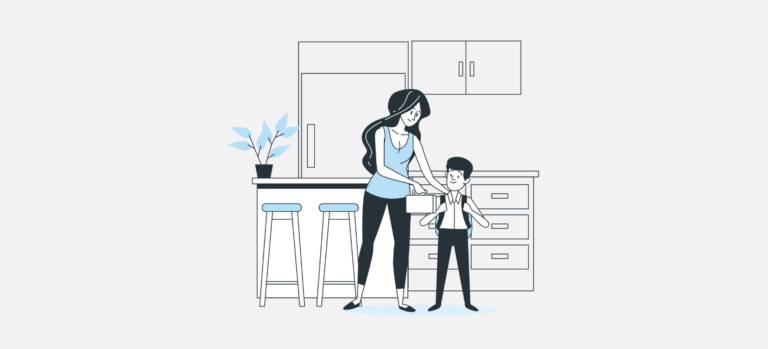What is an AHV widow's pension?
The widow's pension is an AHV benefit paid to married or divorced women whose spouse has died. It is one of a number of survivor's pensions designed to provide financial protection for relatives of the deceased who depend, or have depended, on the deceased's income.
The aim is to ensure that the death of one spouse does not plunge the other into a precarious situation, particularly if there are dependent children or if the spouse is close to retirement age.
Widow's pension vs. widower's pension: difference in treatment
To this day, Swiss law still distinguishes between men and women. A widow's pension may be granted for life, or temporarily under certain conditions. On the other hand, a man (widower) is entitled to this pension only if he has children until the youngest child reaches the age of majority.
This differentiated treatment is currently being reviewed, with a view to harmonizing benefits as part of a reform towards a "surviving parent's pension".
Conditions for obtaining an AVS widow's pension
To receive an AHV widow's pension in Switzerland, certain conditions must be met. These vary according to whether the woman is married or divorced at the time of your spouse's death.
If you are married at the time of death
You are entitled to an AHV widow's pension if:
- You have at least a child (regardless of age) at the time of the spouse's death,
- or
- You have 45 years old and have been married for at least 5 years.
These two conditions are alternatives. If you meet at least one of them, you can receive a widow's pension on a permanent basis.
If you do not meet the above conditions
You are only entitled to a temporary widow's pension until your youngest child reaches the age of 18 years old. The right then lapses.
If you are divorced
- 1. You have children from your marriage to the deceased,
- 2. The marriage lasted at least 10 years,
- 3. You meet one of the following two conditions:
- You were 45 or older at the time of the divorce,
- You reach the age of 45 when the youngest child born of the marriage turns 18.
Children eligible for widow's pension
Are considered your own children those of a deceased spouse living with you who are entitled to an orphan's pension, as well as children you and your spouse have fostered together, provided you have adopted them after becoming a widow.
In addition, a married woman to the mother of a child is also recognized as a widow with a child, if she was married to the mother at the time of the birth and the child was conceived in accordance with the law on medically assisted procreation (art. 255a, para. 1 CC), thus establishing a parent-child relationship.
Successive marriages and registered partnerships
If you have been married several times, the cumulative duration of your marriages is taken into account when calculating the widow's pension. For same-sex couples who have converted their registered partnership into a marriage, the years spent in the partnership are added to the duration of the marriage.
Calculation of AHV widow's pension
The AHV widow's pension is not a flat-rate amount: it is calculated on the basis of the deceased spouse's contributions. This calculation takes into account the deceased's career path, family situation and certain statutory bonuses.
1. Which annuity is paid if several entitlements exist?
When a widow qualifies for a pension, she is entitled to a survivors' pension and for a old-age pension or disability, she receives only one pension: the highest of both. The AVS applies a strict principle of non-cumulation of main pensions.
2. Elements taken into account for calculation
The amount of the annuity depends on the average annual income of the deceased spouse, i.e. the average income on which he or she paid AVS contributions during his or her working life. This average income is adjusted in line with the AVS index to reflect wage levels over the years.
Based on this average income, we determine a full pension. This is then adjusted according to the situation: for example, if the deceased also had dependent children. The widow's pension amounts to 80 % of the old-age pension that the husband would have received.
3. How do I get a full pension?
A full pension (according to thescale 44) is granted if the deceased made uninterrupted contributions from the year following his 20 years until his death. If this is not the case, a partial annuity is calculated in proportion to the actual number of years of contributions.
The years of youth (from 18 to 20) can be included in the calculation to fill any gaps. Finally, if the deceased continued to work after reaching AHV retirement age (65), these additional contributions can, under certain conditions, be taken into account to improve the pension. However, only one recalculation is permitted after the reference age.
4. Calculation of average annual income
The decisive average annual income is the central element in determining the amount of the AHV pension paid to survivors. It is a weighted average that reflects the insured income of the deceased throughout his or her working life. This average income is made up of three main components:
1. Income paid into AHV: all income from gainful employment declared and recorded on the deceased's individual AVS account (CI). This income may date back several decades. To ensure intergenerational fairness, they are automatically revalued to take account of wage and price trends in Switzerland.
2. Bonuses for educational duties: they are awarded for the years during which the deceased looked after one or more children under the age of 16. These bonuses are intended to compensate for periods when professional activity may have been reduced in favor of child-rearing.
3. Bonuses for care work: in certain cases, if the person has taken care of relatives requiring significant assistance (e.g. elderly parents or disabled people), a specific bonus may also be awarded.
5. Career supplement
When the deceased was under 45 at the time of death, his or her career had not been fully completed. To avoid penalizing survivors, a career supplement is automatically added to the average insured income.
This supplement takes the form of a percentage increase, the rate of which depends on age at the time of death. It starts at 100 % at age 23, then gradually decreases to 5 % at age 45. From age 45, no supplement is applied.
6. Career supplement
The child-rearing bonus is an important component of the AHV calculation. It recognizes the contribution made by parents who have reduced their professional activity (or put their career on hold) to care for young children.
In 2025, this bonus is set at three times the AHV pension minimum annual :
3 × CHF 15,120 = CHF 45,360 per year of child-rearing.
The way in which this bonus is awarded depends on the family situation:
- Between married spouses, it is shared equally for each calendar year between the year in which the younger spouse turns 21 and the year in which the older spouse reaches AHV/AVS age.
- In the event of divorce or separation, the bonus may be awarded entirely to one of the parents, according to a court judgment, an APEA decision, or a mutual agreement between the parents.
7. Final pension amount
- Widow's or widower's pension: between CHF 1,008.- (minimum) and CHF 2,016.- (maximum)
- Orphan's pension: between CHF 504.- and CHF 1,008.- per child
In the event of a partial pension, the amounts are proportionally reduced according to the scale (from 1 to 43).
Ceilings for multiple pensions
When several pensions are paid within the same household (e.g. a widow's pension + two orphans' pensions), legal ceilings apply. The total amount cannot exceed:
- CHF 3,024 per month, or 150 % of the maximum AHV pension.
Thus, if a widow is entitled to CHF 2,016 and each child could theoretically receive CHF 1,008, the total would exceed the ceiling. In this case, pensions are reduced proportionally to comply with the limit.
Conclusion
The AVS widow's pension provides essential financial support after the death of a spouse, provided certain criteria relating to the deceased's family situation and AVS contributions are met. The amount depends on average income supplemented by any bonuses. In 2025, the system will still be differentiated between widows and widowers, but a reform is underway to introduce a fairer surviving parent's pension.





